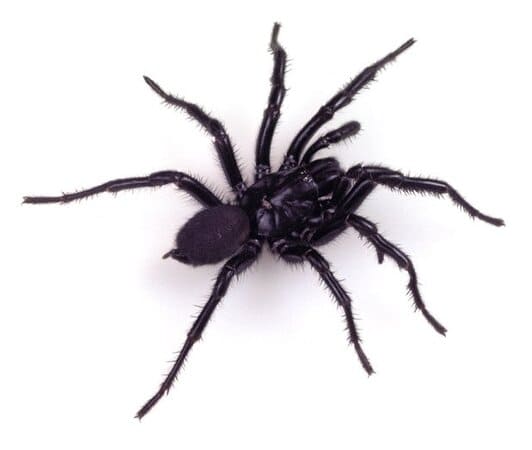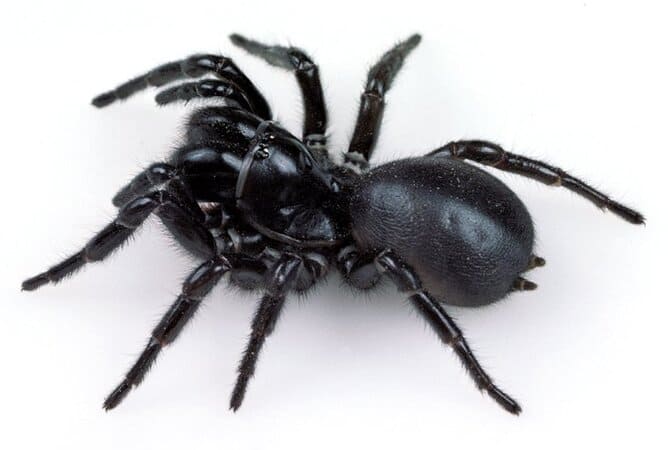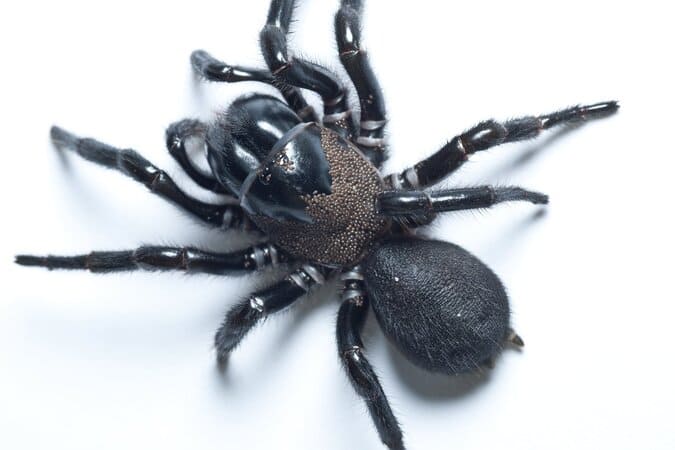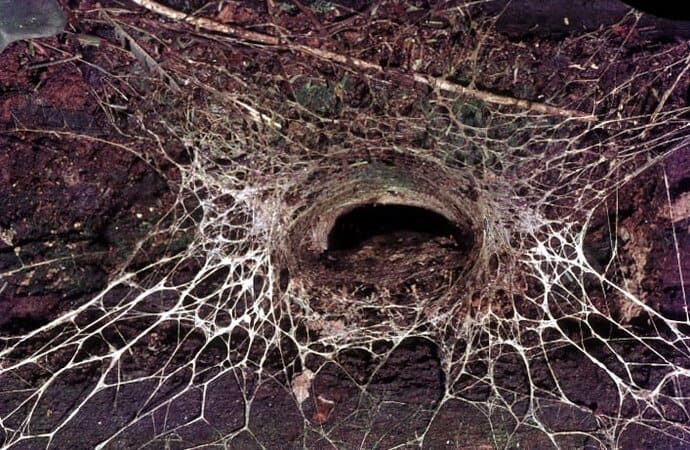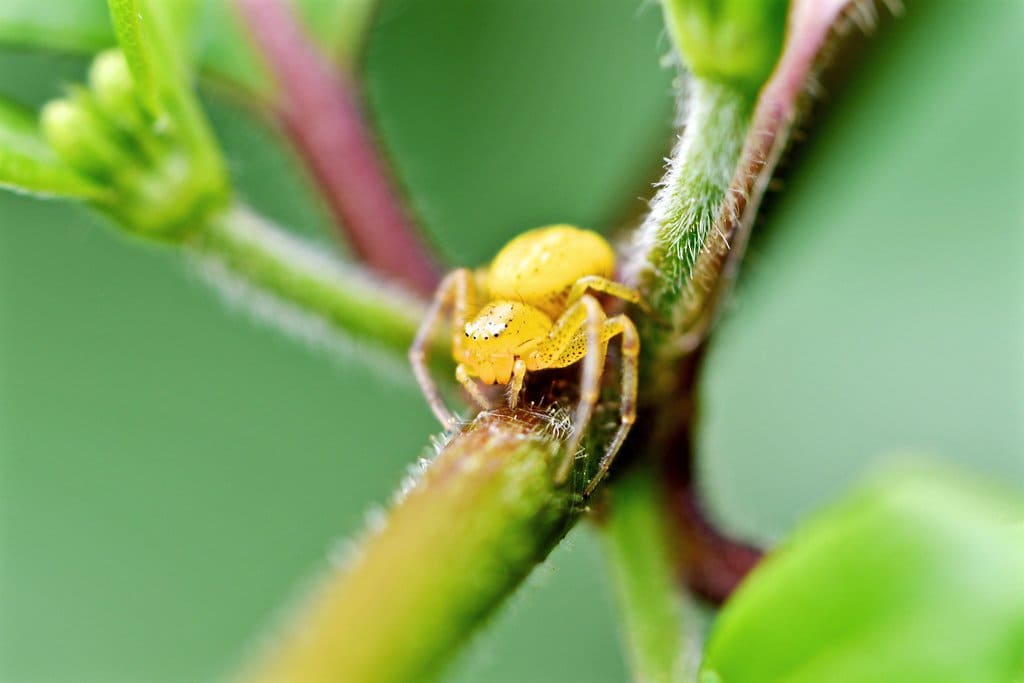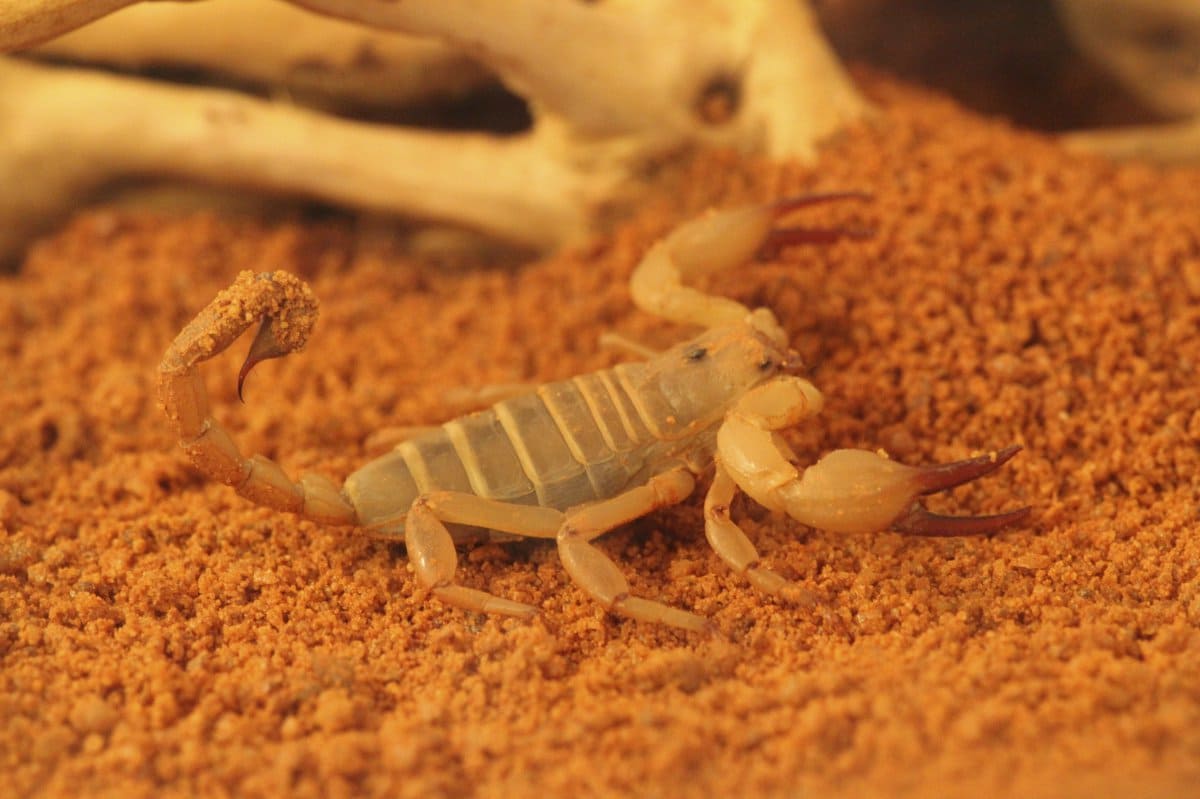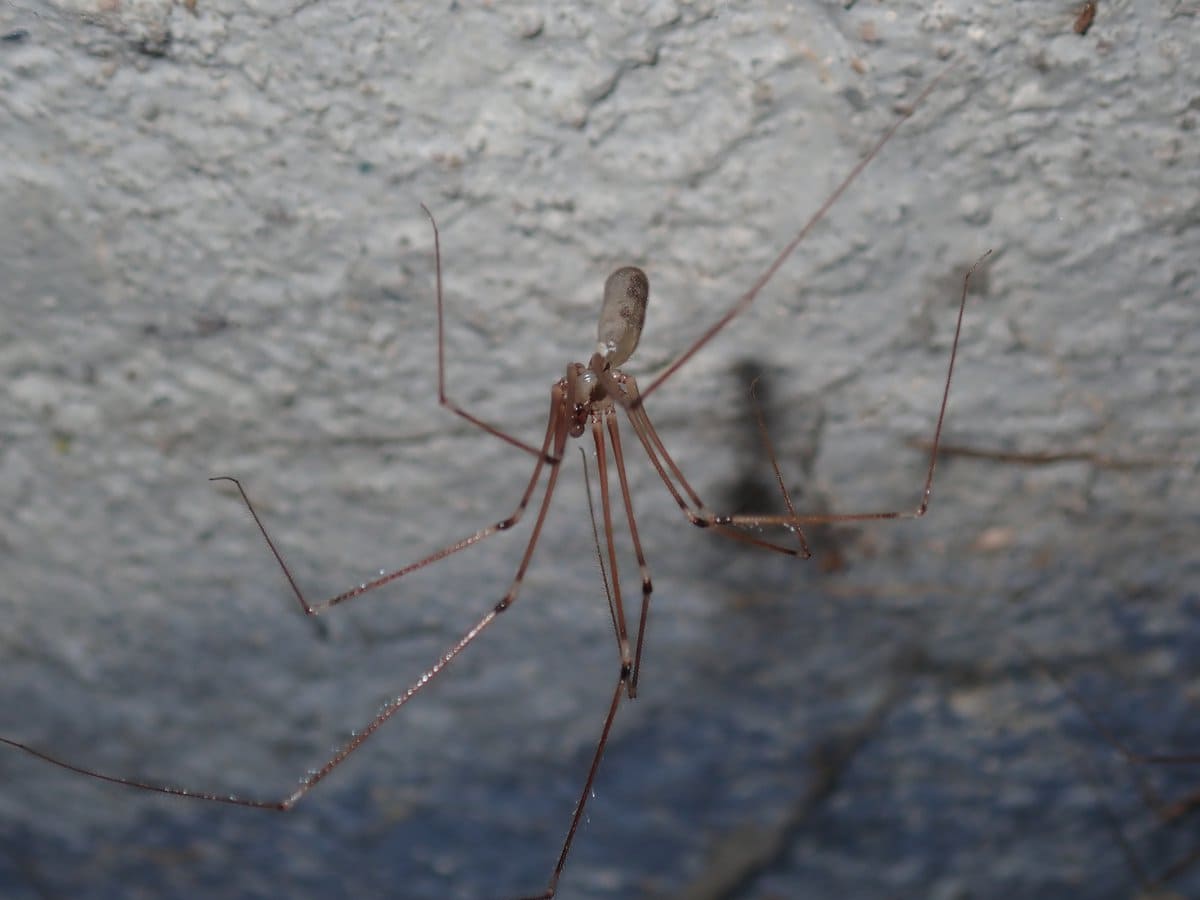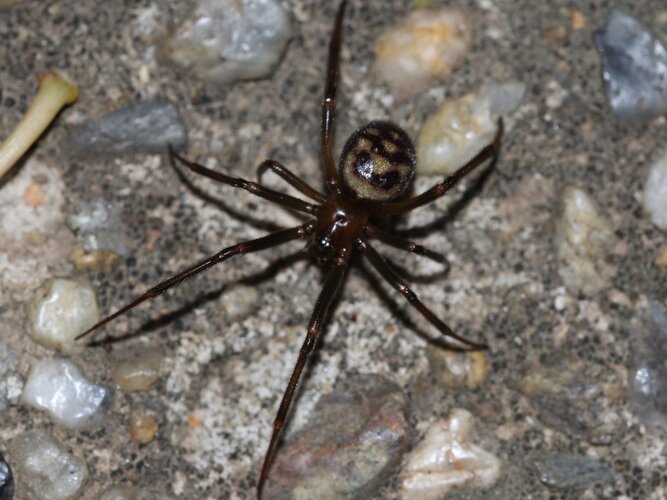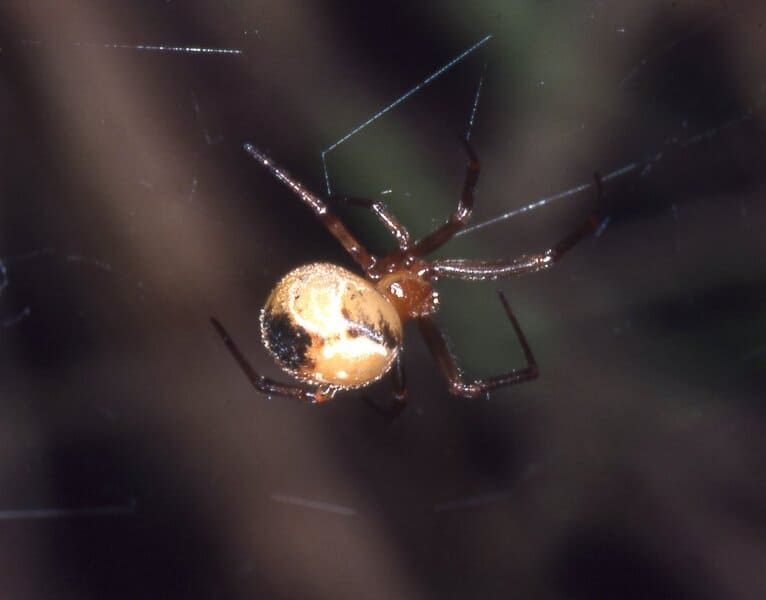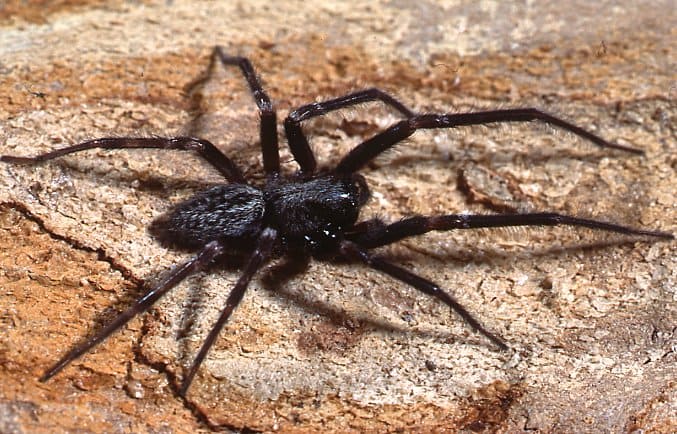Australian funnel‑web spiders
IUCN
LCBasic Information
Scientific classification
- name:Australian funnel‑web spiders
- Scientific Name:Atracidae (notably Atrax, Hadronyche, Illawarra)
- Outline:Arthropoda
- Family:Atracidae Atrax Hadronyche
Vital signs
- length:Adult body length 25–50 mm (excl. legs)
- Weight:Small to medium mygalomorphs; varies by species/sex
- lifetime:Females several to >10 years; adult males shorter
Feature
Burrow‑dwelling; funnel entrance with radial trip lines; parallel downward fangs; medically significant; antivenom available.
Distribution and Habitat
Moist forests, vegetated slopes, gardens/rock piles and crevices in eastern Australia.
Appearance
Glossy dark carapace; robust chelicerae; velvety abdomen; elongated posterior spinnerets.
Details
Australian funnel‑web spiders chiefly refer to the family Atracidae, including the iconicSydney funnel‑web spider Atrax robustus and numerous Hadronyche species. They are robust, burrow‑dwelling mygalomorphs of major medical significance in Australia.
Ecology & Biology
Lifestyle: burrow/crevice dwellers that build a funnel‑shaped entrance with radial trip lines, ambushing passing arthropods at the burrow lip.
Activity: mostly nocturnal; adult males wander during warm, humid periods in search of mates, increasing human encounters.
Venom & medicine: both sexes are venomous; in several species adult males are implicated in more severe bites. Since 1981, widespread antivenom availability has dramatically reduced fatalities in Australia.
Identification
Build: glossy dark brown‑black carapace, powerful chelicerae; abdomen velvety with setae.
Spinnerets: posterior spinnerets elongated with a distinct terminal segment—useful for diagnosis.
Fangs: parallel, downward‑striking (mygalomorph condition).
Size & Longevity
Body length: typically 25–50 mm (excluding legspan); females can be larger/heavier.
Life: females live several years to >10 years; adult male phase is shorter.
Range & Habitat
Primarily eastern Australia (NSW, ACT, SE Queensland, parts of Victoria). Occupy moist forests, vegetated slopes, gardens/rock piles and crevices; burrow mouths show a distinct funnel and radiating silk lines.
Safety & First‑aid notes
Risk scenarios: post‑rain/warm humid nights when wandering males may enter houses or fall into pools.
Avoidance: wear gloves outdoors; never handle spiders by hand; seek professional removal indoors.
First‑aid: where local guidance applies, consider pressure‑immobilisation bandaging (PIB) for suspected serious bites and seek urgent medical care. Follow local medical protocols.
IUCN: group‑level overview; many species lack individual assessments. Marked here as Not Evaluated (NE).
FAQ
Q1. Are these the same as house/grass funnel weavers? No—many “funnel web” common‑name spiders (e.g., Agelenidae) are unrelated and of low medical importance. Atracidae are the iconic medically significant Australian group.
Q2. Why are males more often implicated? Wandering adult males encounter humans more and in some species their venom is more potent to primates.
Q3. Home prevention? Remove garden rock piles/logs, seal gaps and drains, use screens; provide escape ramps/floats for pools.
Q4. Are bites always fatal? With prompt care and antivenom access, severe outcomes are now rare—do not delay medical attention.

